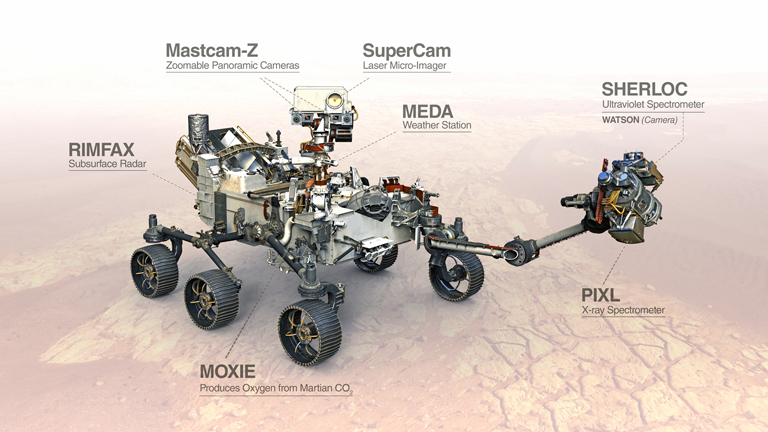
The Perseverance Mars rover has a launch date of July 20 when it will head to the Red Planet.
By Mary O’KEEFE
NASA’s Perseverance Mars rover is just over a month from its July 20 targeted launch date. The rover’s astrobiology mission will seek signs of past microscopic life on Mars, explore the geology of the Jezero Crater landing site, and demonstrate key technologies to help prepare for future robotic and human exploration. And the rover will do all that while collecting the first samples of Martian rock and regolith (broken rock and dust) for return to Earth by a set of future missions. Mars 2020 Perseverance mission is managed by Jet Propulsion Laboratory.
“Fifty-one years ago [on Wednesday], NASA was deep into final preparations for the first Moon landing,” said NASA administrator Jim Bridenstine in a released statement. “Today we stand at the threshold of another monumental moment in exploration: sample collection at Mars. As we celebrate the heroes of Apollo 11, future generations may well recognize the women and men of Perseverance – not only for what they will achieve 100 million miles from home, but for what they were able to accomplish on this world on the road to launch.”
Perseverance is scheduled to launch on July 20 from Cape Canaveral in Florida. The launch window to Mars is through Aug. 11 and, if for some reason it does not launch by then, the next launch opportunity would not be until September 2022.
Perseverance Mars will be taking the heaviest payload yet to the Red Planet. The mission’s foundation is bolstered by lessons scientists and engineers have learned through the previous eight missions to Mars. NASA/JPL’s first rover to Mars was Sojourner, in 1997, which was the size of a microwave. Perseverance is the size of an SUV.
The place where the rover will land is a 28-mile-wide crater named Jezero Crater. Scientists think it was a possible oasis in the ancient past of the planet.
“Between 3 billion and 4 billion years ago, a river there flowed into a body of water the size of Lake Tahoe, depositing sediments packed with carbonate minerals and clay. The Perseverance science team believes this ancient river delta could have collected and preserved organic molecules and other potential signs of microbial life,” according to a JPL statement.
One of the unique aspects of the mission is the collection of Martian samples for eventual return to Earth. This will be the first rover to bring a sample caching system to Mars. The rover’s drill will cut sample cores from the living rock that are about the size of a piece of chalk and then place them in sample tubes to be taken to a drop-off location. Those samples will not be brought back to Earth until 2031.
The reason it will take so long is because the mission to retrieve and bring back the samples is very complex. It will require multiple steps and everything must be considered, from the development of a retrieval spacecraft to the cost of the mission. Luckily, NASA is working with the European Space Agency to help develop this mission.
The exploration done by Perseverance will pave the way for future human missions to the Moon and Mars. The rover’s Terrain-Relative Navigation system will enable the rover to quickly and autonomously comprehend its location over the Martian surface and modify its trajectory during the descent to the crater bottom. This technology will be able to provide invaluable assistance for both robotic and crewed missions landing on the Moon and Mars, according to JPL.
Perseverance also has more cameras than any other interplanetary mission in history. The 19 onboard cameras will provide many views of Mars as well as views of the descent and landing.
People can follow Perseverance’s journey on social media at @NASAPersevere and @NASAMars.
